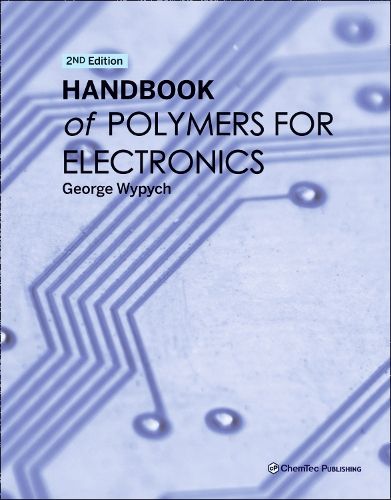Readings Newsletter
Become a Readings Member to make your shopping experience even easier.
Sign in or sign up for free!
You’re not far away from qualifying for FREE standard shipping within Australia
You’ve qualified for FREE standard shipping within Australia
The cart is loading…






Handbook of Polymers for Electronics, Second Edition delivers a comprehensive overview of the latest advancements in polymers for electronic applications. Drawing from current literature, manufacturing insights, and patent filings, it organizes all polymer data into a clear, consistent format. Readers will find sections on history, synthesis, structure, commercial polymers, and essential properties such as physical, electrical, and mechanical characteristics. The book also addresses chemical resistance, flammability, weather and thermal stability, biodegradation, toxicity, environmental impact, processing techniques, polymer blends, and analytical methods. This resource is indispensable for professionals working with modern polymeric materials in electronics. Beyond its technical data, the handbook emphasizes the diverse roles polymers play in high-tech fields like space, aviation, healthcare, automotive, communications, energy harvesting, lighting, sensing, robotics, and consumer electronics. While conductivity remains a central attribute, the book covers advanced features including shape-memory, piezoelectricity, and ferroelectricity.
$9.00 standard shipping within Australia
FREE standard shipping within Australia for orders over $100.00
Express & International shipping calculated at checkout
Stock availability can be subject to change without notice. We recommend calling the shop or contacting our online team to check availability of low stock items. Please see our Shopping Online page for more details.
Handbook of Polymers for Electronics, Second Edition delivers a comprehensive overview of the latest advancements in polymers for electronic applications. Drawing from current literature, manufacturing insights, and patent filings, it organizes all polymer data into a clear, consistent format. Readers will find sections on history, synthesis, structure, commercial polymers, and essential properties such as physical, electrical, and mechanical characteristics. The book also addresses chemical resistance, flammability, weather and thermal stability, biodegradation, toxicity, environmental impact, processing techniques, polymer blends, and analytical methods. This resource is indispensable for professionals working with modern polymeric materials in electronics. Beyond its technical data, the handbook emphasizes the diverse roles polymers play in high-tech fields like space, aviation, healthcare, automotive, communications, energy harvesting, lighting, sensing, robotics, and consumer electronics. While conductivity remains a central attribute, the book covers advanced features including shape-memory, piezoelectricity, and ferroelectricity.